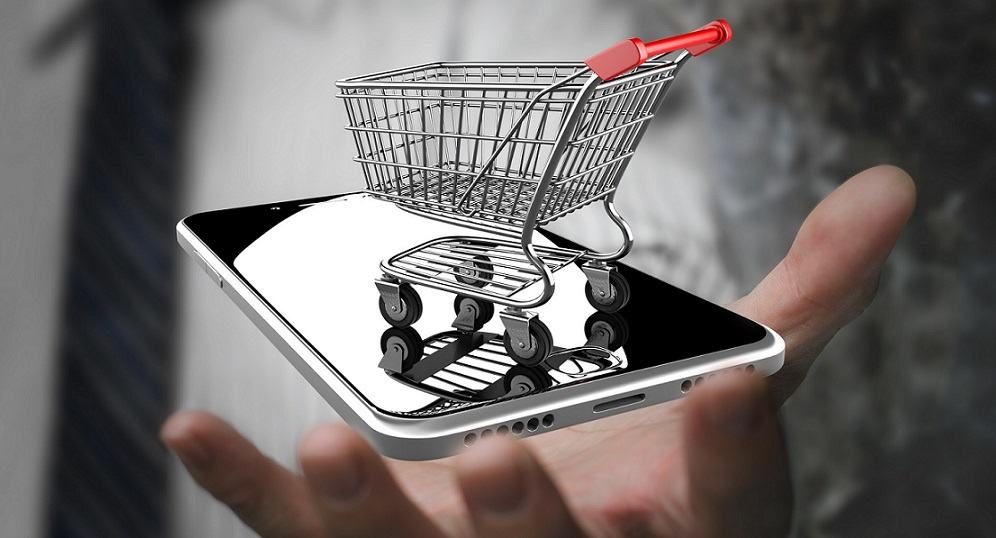Reprogramming Consumers' Shopping Behaviors, One Mobile App at a Time
Dec 23, 2016 / By Vanessa Horwell
From the country that brought you 5-pound hamburgers, now this: Two apps that will make it even easier for shoppers to completely avoid tangible, physical interaction with a brand or human.
And these two examples (explained in detail below) pale in comparison to what Amazon is doing with its new retail concept – Amazon Go - where the consumer controls the entire shopping and checkout experience.
Are these developments the death knell for sales associates and frontline employees? What are academics and retail experts saying?
Let’s start with mobile apps.
By the end of 2016, the world will have 6 billion mobile device users, a number expected to increase to nearly 7 billion (6.9 billion to be exact) by 2020, according to The Radicati Group: “Mobile devices in use, including phones and tablets, will grow from over 11 billion in 2016 to over 16 billion by 2020.”
That growth has clearly created a launching pad for mobile apps, which, according to IDC estimates, will grow from 156 billion installs in 2015 to 210 billion by 2020.
Mobile apps as seeds of change
As a result of this growth and adoption, mobile app developers insist that their products are changing the way consumers behave (and shop), and frankly, who can argue with them?
Consider McDonalds, which is rolling out a mobile app in 2017 that will function as the “digital drive-thru” of the future. No more shouting into a malfunctioning microphone or repeating an order 11 times. And no need to loiter in the drive-thru lane, either; the mobile-powered “order and pay” app removes humans and physical payments from the equation. Everything is handled within the app, from order to payment, meaning that fast-food lovers can get their Happy Meals served up even faster. What’s not so fast, however, is the roll-out; McDonalds says the technology won't be widely available until 2018.
How about washing that greasy meal down with a Ketel One and tonic, or a glass of Chablis when you get home? Mmmm…. If you live one of 32 U.S. or Canadian cities, a new mobile app from Drizly can help. Developed as an alcohol home delivery service, thirsty consumers can place their booze orders on the Drizly app and receive doorstep deliveries faster than you can ask “how bad is your hangover?” Yet again, an app replaces a traditional consumer shopping experience.
And you thought the e-commerce revolution would change retail...
The coup de grace, however, comes from Amazon (shocker) and its new Amazon Go retail concept. Grocery shoppers no longer have to "slow walk" through the checkout lines to pay for goods. Instead, they can shop as usual – throwing groceries into the basket or trolley. What’s not usual is they leave the store with their shopping goodies automatically billed directly to their Amazon account. In-store scanning devices, microphones, sensors and cameras match product barcodes with shoppers, shoppers' actions and their payment info on the shoppers' Amazon Go mobile app. Amazon calls it "Just Walk Out" shopping.
Currently in test mode in Seattle, you can bet that Amazon's concept, i.e., removing the “human” equation and the check-out lane from traditional shopping experiences and retail environments, will be explored and iterated elsewhere.
Faster, stronger, better: Companies speed up the shopping experience
Taking a cue from Daft Punk’s “Harder, Better, Faster, Stronger” lyrics, there’s a lot to like on the business side with these revolutionary mobile shopping apps. In discussing the Amazon Go service recently, CNBC’s Jim “Mad Money” Cramer makes a salient, but obvious point – long lines at registers and checkouts are the bane of retailers and restaurants. Shoppers think they suck, too.
But now, with apps from Amazon, McDonalds, and Drizly, mobile is carving a clear – and much bigger -- path for companies to check shoppers out faster, speed up the shopping experience, sell more stuff, and presumably attract previously impatient customers in the process. For customers, these new retail app experiences give them greater flexibility and control over their own shopping habits, thus allowing the Great American Consumer – not the shops, grocers, restaurants or malls - to call the shots.
Will sales associates and store checkouts go the way of the dodo bird?
Faced with competition from mobile app “kiosks” that allow consumers to bypass order counters and checkout lines and have goods delivered to their doors, front-line retail and restaurant staffers may soon be looking for new lines of work. Exhibit "A" is the high-end retailer Nordstrom, which just announced 400 store-based job cuts. The Seattle-based retailer cites the “changing consumer shopping experience,” which has led to the company's new Android app, a text-to-buy service, curbside pickup for ecommerce shoppers, and an Instagram purchase option.
Nordstrom, which has seen its e-commerce business climb from 8%-20% annually in the past five years, has apparently acknowledged a future that does not prioritize front-line store personnel. “We will never change our commitment to serving customers, but recognize how they want to be served has been changing at an increasingly rapid pace,” Nordstrom co-president Blake Nordstrom said in a recent statement. “Meeting our customers’ expectations means we must continually evolve with them. We see opportunities to create a more efficient and agile organization that ensures we’re best positioned to achieve our goals.”
Still interested in a retail career? Start developing a mobile app.
Mobile apps are making the American consumer lazy….er, lazier
For most consumers, not having to wait in line, get out of a car, or even leave home to buy stuff is incredibly convenient. Thanks to Uber, even driving is now a completely different experience for some consumers. (For more on lazy consumers here: Customers are lazy. Are marketers ready to pick up the slack?)
But someone must ask the question: Is it good for our mental health or civic-mindedness to avoid personal contact with store clerks, restaurant employees or other shoppers? Is the new normal for shopping all that normal? There are no specific studies on the topic yet, but there's also no going back now. Remember the advent of online shopping, which raised questions about how the then-new "approach" to shopping would work? What we’re experiencing now is another revolution in the retail experience; a new shopping hybrid that will have far-reaching repercussions that we can't yet fathom.
With $45 billion on the line this year in mobile app purchases, and that number heading to $80 billion by 2020, expect a “new normal” for shopping. By reprogramming consumer shopping behaviors, mobile app developers have given retail companies new tools for revamping and upgrading the shopping experience.
In ways that few could have imagined even five years ago, apps are changing the game for both consumers and retailers. How the game plays out? That's still anyone's guess.
Sign up for our insights on the convergence of business and PR






